Last meal of ancient human sacrifice victim 'Tollund Man' revealed in exquisite detail
Before he was hanged, Tollund Man ate porridge and fish.
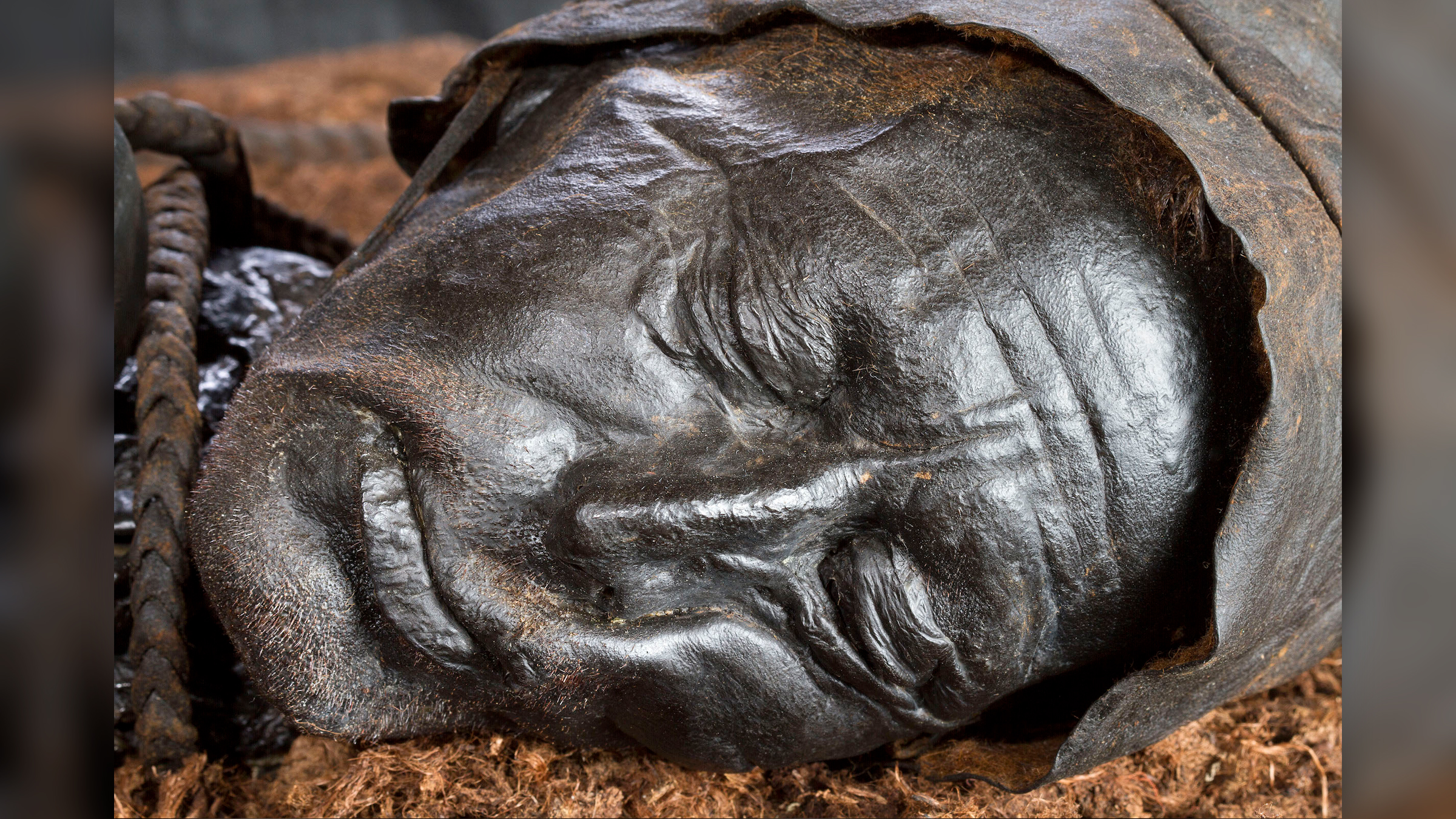
Shortly before his violent death in 400 B.C., a man — whose remains are known as Denmark's famous bog body "Tollund Man" — ate a meal of porridge and fish, a new study finds.
Tollund Man also had several parasitic infections from whipworms and mawworms, as well as the first reported case of tapeworm ever found in an ancient body preserved in a bog, said the researchers, who made the finding by studying a piece of Tollund Man's colon.
"We have been able to reconstruct the last meal of Tollund Man in such great detail that you can actually recreate the meal," study lead researcher Nina Nielsen, an archaeologist and head of research at Museum Silkeborg in Denmark, told Live Science. "That's quite fascinating, because you can get so close to what actually happened 2,400 years ago."
Related: Photos of the best preserved bog people
The ancient man's remains were found in 1950 by a family from the nearby village of Tollund while they were digging for fuel in a peat bog. His body — and the rope tied around his neck — were so well preserved, the family thought he was a recent murder victim, prompting them to call the police, according to Museum Silkeborg.
But it soon became apparent that the Tollund Man had lived long ago and that the low-oxygen environment of the peat bog had preserved his remains. Over the years, studies have found that he died between 405 B.C. and 380 B.C., at the beginning of the Danish early Iron Age, and that he was between 30 and 40 years old when he died in a possible human ritual sacrifice. Tollund Man had been hanged and placed in a sleeping position in a peat pit — an "extraordinary treatment" given that most dead people from that time and place were cremated and buried on dry land, the researchers wrote in the study.
A 1951 study on Tollund Man's gut found that he chowed down on porridge for his last meal. However, techniques to analyze the gut have improved since then, so a team of researchers took another look at Tollund Man's last few bites.
Sign up for the Live Science daily newsletter now
Get the world’s most fascinating discoveries delivered straight to your inbox.
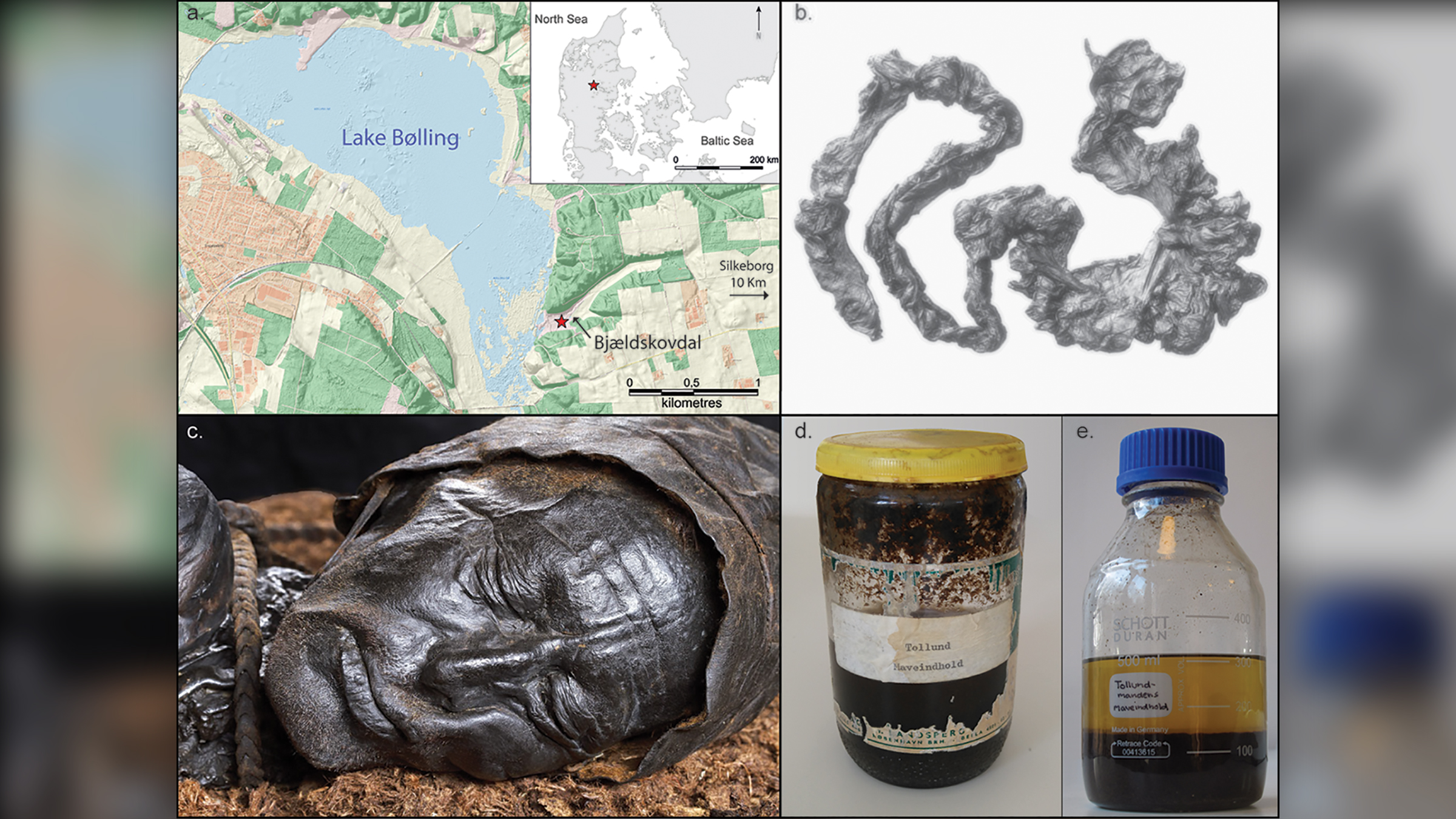
Last meal
By looking at a previously cut and preserved piece of Tollund Man's large intestine, the team found that the 1951 study was fairly accurate but had missed a few things, including the proportions of the meal's ingredients. The new analysis showed that by weight, the porridge was 85% barley (Hordeum vulgare), 9% a weed called pale persicaria (Persicaria lapathifolia) and 5% flax (Linum usitatissimum). The remaining 1% included a variety of seeds, including those from the weed corn spurrey (Spergula arvensis), the mustard family plant gold of pleasure (Camelina sativa) and three wetland plants: marsh willowherb (Epilobium palustre), compact/soft rush (Juncus conglomeratus/effusus) and marsh violet (Viola palustris). In addition, the team found pollen from barley, grasses and open dryland plants.
Barley and flax grow in different seasons, so the seeds of the weed pale persicaria were "presumably harvested along with the barley crop," the researchers wrote in the study.
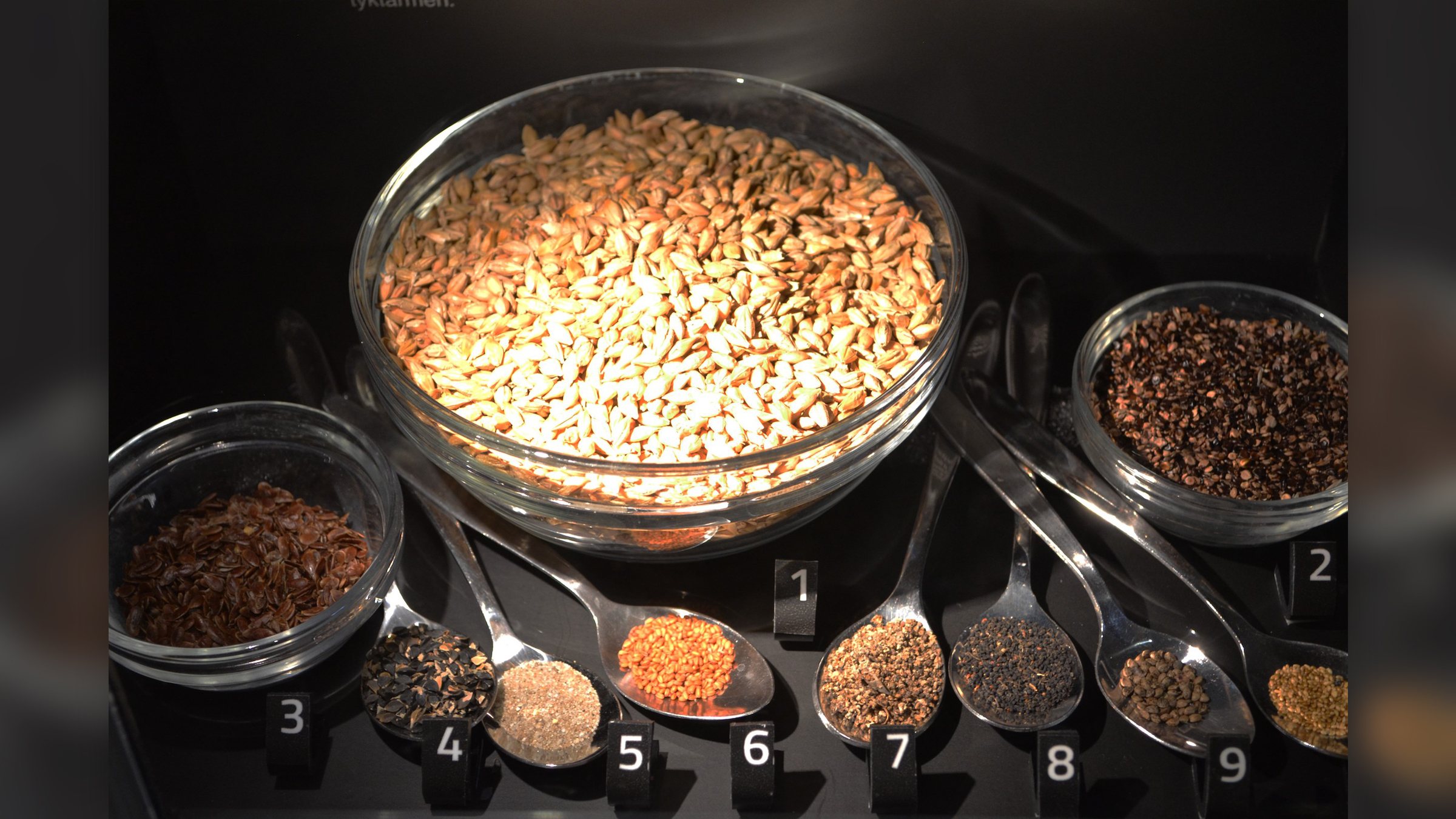

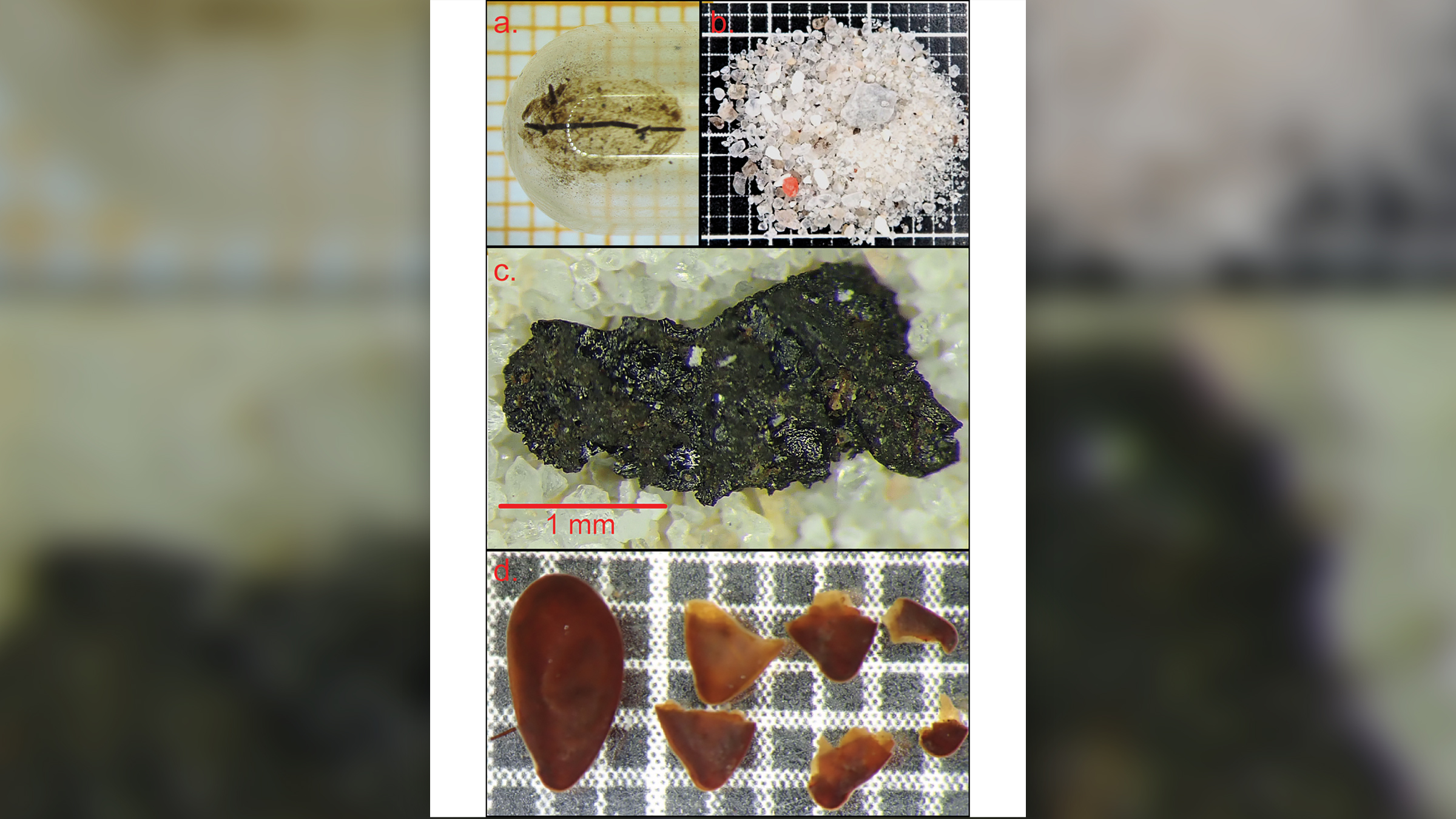
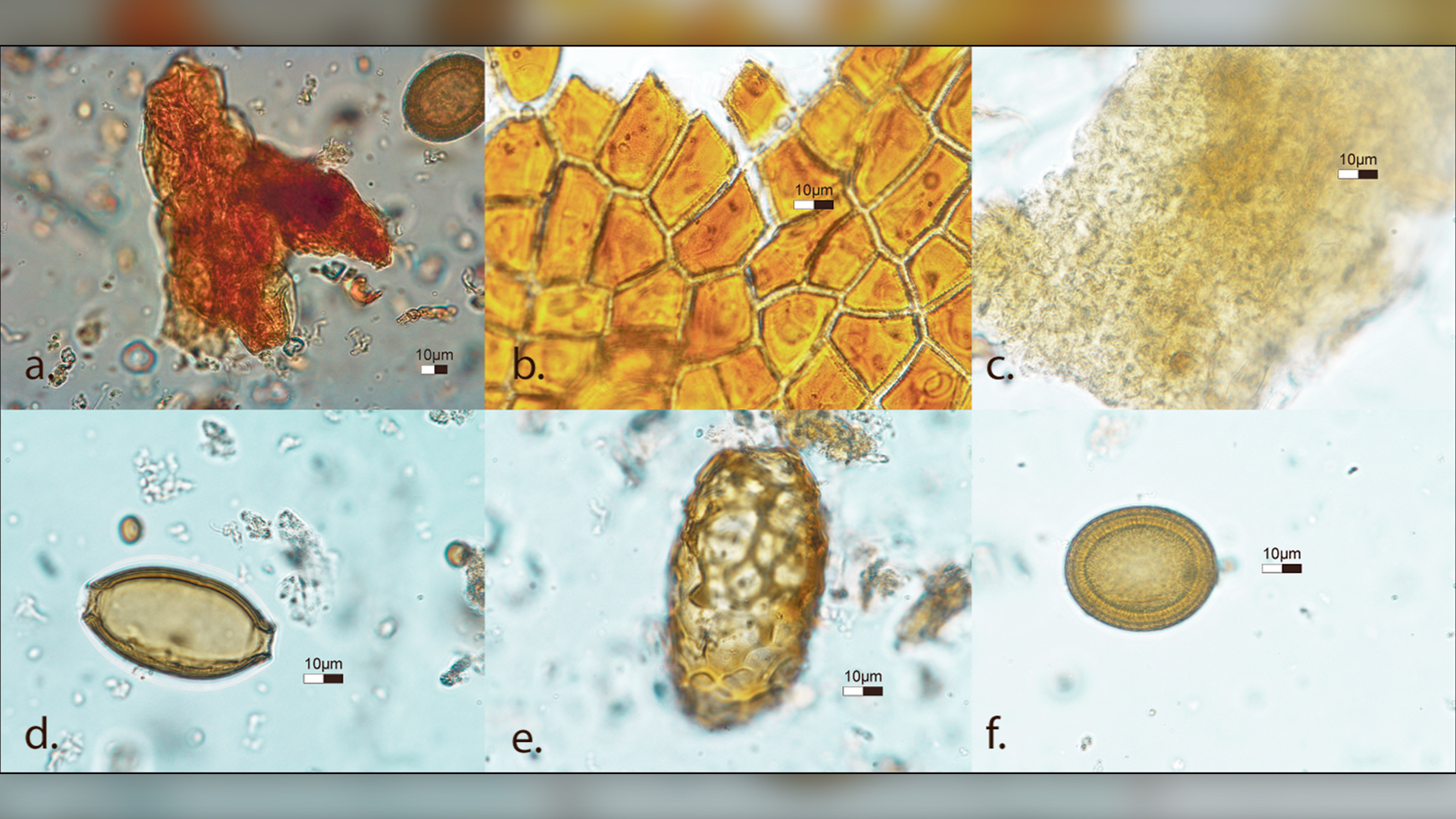
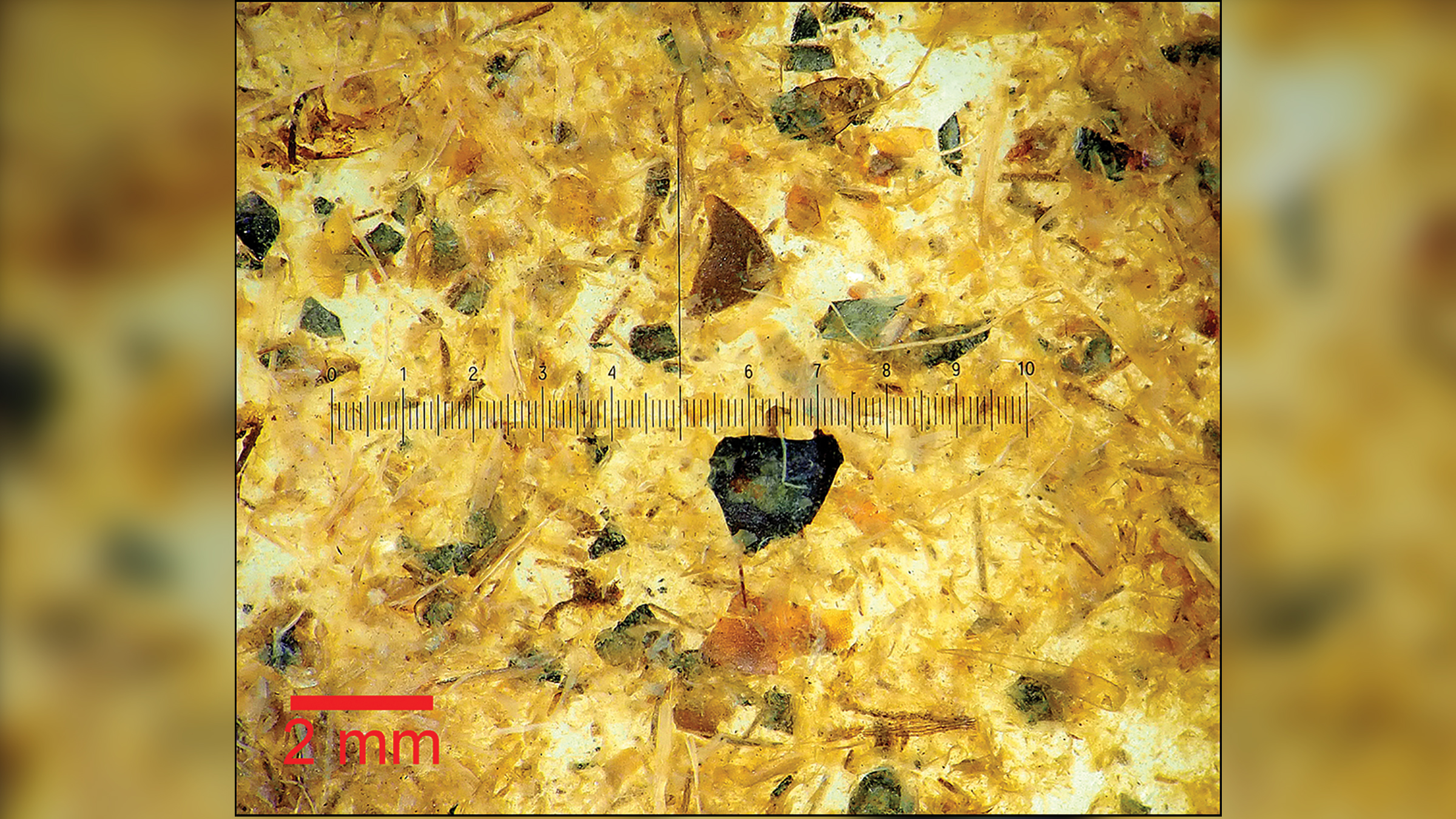
Usually, when farmers clean and sieve grain, the small weed seeds that were collected alongside it, such as those from pale persicaria, fall out, Nielsen said. But it appears that in Tollund Man's case, this waste material — including tiny bits of charcoal, charred food crust (indicating the porridge had been cooked in a clay vessel) and sand grains — was added to the porridge, possibly as a ritual practice, she said.
Related: In photos: A look inside an Egyptian mummy
A chemical and protein analysis revealed that Tollund Man ate a fatty fish along with the porridge about 12 to 24 hours before he died. While Iron Age people in Denmark ate fish, it wasn't a large part of the diet then, the researchers noted. Additional analyses revealed parasite eggs, which Tollund Man likely got by eating raw or undercooked meat and drinking contaminated water, Nielsen said.
The circumstances leading to Tollund Man's death are a mystery, but the meal does offer clues, the researchers said.
"Our interpretation of Tollund Man was that he was ritually sacrificed," Nielsen said. "At this time in the Iron Age, it was common to use wetlands for ritual activities." An earlier analysis revealed that though Tollund Man likely died from suffocation, his neck wasn't broken. Perhaps a number of rituals took place before Tollund Man was hanged, including the consumption of his last meal, she said.
The study "extends our knowledge on the diet and the preparation of meals in the Danish Iron Age," said Albert Zink, head of the Institute for Mummy Studies at Eurac Research in Bolzano, Italy, who was not involved with the research but did a similar "last meal" study on Ötzi the Iceman, who lived about 5,300 years ago in the Alps.
"It shows that it is important to re-analyze such samples, as scientific methods are continuously improving and thereby new information can be added," Zink told Live Science in an email. "For example, we have learnt from this study that the Tollund man most likely consumed fish and meat."
The study was published online Wednesday (July 21) in the journal Antiquity.
Originally published on Live Science.

Laura is the archaeology and Life's Little Mysteries editor at Live Science. She also reports on general science, including paleontology. Her work has appeared in The New York Times, Scholastic, Popular Science and Spectrum, a site on autism research. She has won multiple awards from the Society of Professional Journalists and the Washington Newspaper Publishers Association for her reporting at a weekly newspaper near Seattle. Laura holds a bachelor's degree in English literature and psychology from Washington University in St. Louis and a master's degree in science writing from NYU.









